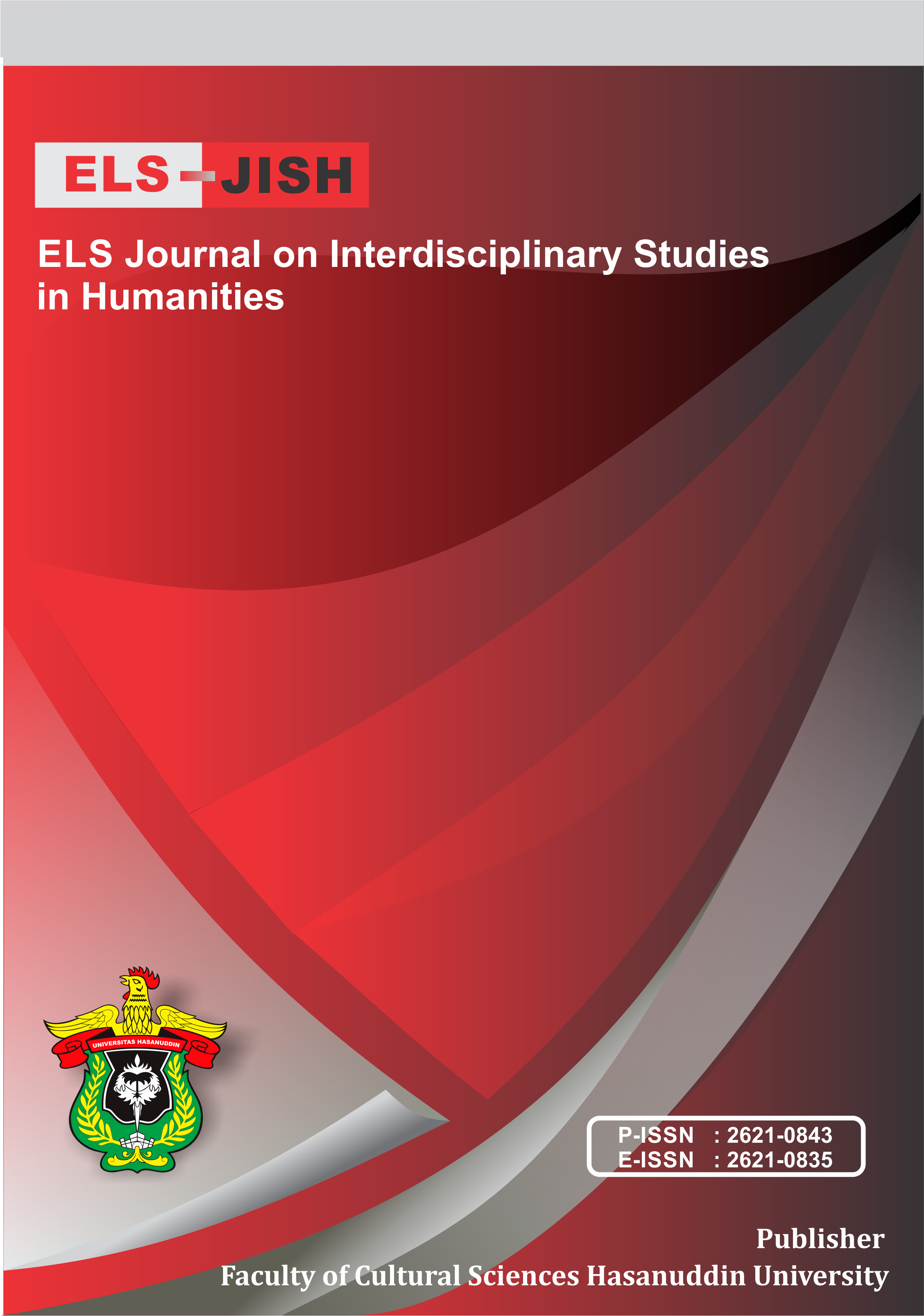The Racist Fact against American-Indians in Steinbeck’s The Pearl
DOI:
https://doi.org/10.34050/elsjish.v3i3.11347Keywords:
Racism, America, Genetic Structuralism, Novel The PearlAbstract
the social conditions of Indians as Native Americans for the treatment of white people who are immigrants from Europe in America. This research explores aspects of the reality of Indian relations with European immigrants in America that have an impact on discriminatory actions against Indians in John Steinbeck's novel The Pearl. Social facts are traced through fiction as part of the genetics of literary works. The research method used is genetic structuralism, a literary research method that traces the origin of the author's imagination in his fiction. The imagination is considered a social reality that reflects events in people's lives. The research data consist of primary data in the form of literary works, and secondary data are some references that document the background of the author's life and social reality. The results of this research indicate that racist acts as part of American social facts are documented in literary works. The situation of poor Indians and displaced people in slums is a social fact witnessed by John Steinbeck as the author of the novel The Pearl through an Indian fictional character named Kino. Racism is an act of white sentiment that discriminates against Native Americans, namely the Indian community.Downloads
References
Alberta Civil Liberties Research Centre (ACLRC). (2018, December). Forms of Racism. retrieved from https://www. nationalgeographic.com/magazine/ 2018/12/native-americans-recasting-views-indigenous-life/ (accessed on April 12, 2020)
Al-Hafiz, Afareez Abd Razak. (2012), Misteri Firaun Musuh Para Nabi: menyingkap tabir peradaban paling berpengaruh sepanjang zaman. Translated by Herlina Kamba. Jakarta: Ufuk Publishing House.
Campbell, B.J. (2018, August). The Two Confusing Definitions of Racism. retrieved from https://medium.com/handwaving-freakoutery/the-two-confusing-definitions-of-racism-2d685d3af845 (accessed on April 12, 2020)
Cineotta, Howard, et al. (2004), Garis Besar Sejarah Amerika. Translated by Yusi A. Pareanom. Jakarta: Departemen Luar Negeri Amerika Serikat.
Endraswara, Suwardi. (2013), Metodologi Penelitian Sastra: Epistemologi, Model, Teori, dan Aplikasi. Yogyakarta: CAPS (Center for Academic Publishing Service).
Faruk. (2014), Pengantar Sosiologi Sastra, dari Strukturalisme Genetik sampai Post-modernisme. Yogyakarta: Pustaka Pelajar.
Goring, Paul, et al (ed.). (2001), Studying Literature: the essential companion. USA: Oxford University Press.
Goldmann, Lucien. (1977), Towards A Sociology of The Novel. London: Tavistock Publications.
Goldmann, Lucien. (1981), Method in the Sociology of Literature. London: Basil Blackwell Oxford.
Larasati, Aziza Fanny. (2019, December). The Two Confusing Definitions of Racism. retrieved from https://www.matamatapolitik. com/historical-genosida-suku-indian-pembantaian-penduduk-asli-amerika-atas-nama-peradaban (accessed on April 15, 2020)
Olson, Keith W. (1992), An Outline of American History. USA: University of Maryland.
Pearson, Michael. (1994), Tempat-Tempat Imajiner. Perlawatan ke Dunia Sastra Amerika. Translated by Sori Siregar, et al. Jakarta: Yayasan Obor Indonesia.
Rahman, Fathu & Weda, Sukardi. (2018). Students’ Perceptions in Appreciating English Literary Works through Critical Comment: A Case Study at Hasanuddin University and Universitas Negeri Makassar. Asian EFL Journal. 20. 149-172.
Ramadhan, Farkhan. (2020, February). Konflik Sosial Di Masyarakat. retrieved from https://khanfarkhan.com/contoh-konflik-sosial (accessed on April 12, 2020)
Steinbeck, John. (1962), The Pearl. New York: Bantam Books.
Ratna, Nyoman Kutha. (2013), Paradigma Sosiologi Sastra. Yogyakarta: Pustaka Pelajar.
Downloads
Published
How to Cite
Issue
Section
License

This work is licensed under a Creative Commons Attribution-NonCommercial 4.0 International License.

















